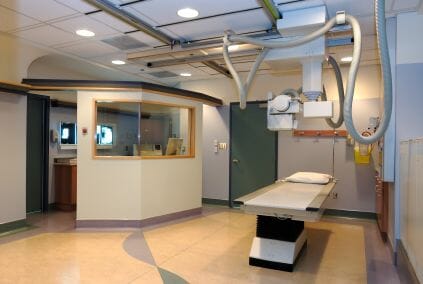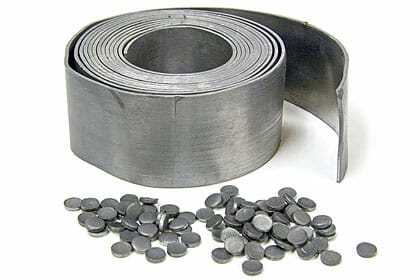
Lead lined sheetrock and lead lined plywood are materials typically used in the construction of radiation shielded rooms.
Depending on the specification requirements one or the other will typically be selected. Usually Lead Plywood will be recommended in applications where a lead sheet thickness greater than 1/8” is required, whereas Lead Sheetrock will be used for lower radiation shielding requirements.
Lead lined sheet rock
Lead sheet rock is also known as lead drywall or lead gypsum. Drywall panels are pressure laminated to continuous lead sheets using permanent adhesive. The resulting panels are secured to the studs using drywall screws with lead screw shields (lead disks) attached and lead seam filler tape across the seams to prevent radiation leakage.
In a typical installation, the leaded side of the lead drywall will be placed against the studs. A lead sheet overhang of a least one inch is required at all joints, as is an overhang of at least one inch into lead doors and lead window areas. Lead disks are installed over all screws and lead tape over all seams.
Lead sheet rock can also be supplied with the lead lining bonded to specialty drywall such as moisture and mold resistant board.
Lead lined Plywood
Lead plywood can be manufactured with either lead sheets incorporated into the plywood layers or to the surface(s). The resulting panel is more substantial than lead drywall.
Lead plywood is usually recommended for higher lead shielding specifications. In these cases the lead sheet can be thicker than 1/8” and often leads to the plywood panels being quite heavy, as a result the lead plywood is often supplied in smaller sizes to make installation more manageable.
As with lead sheetrock lead seam filler and lead screw shields are required to prevent any radiation leakage at penetrations.
For a complete listing of products available on this site, go to the products and services index page .